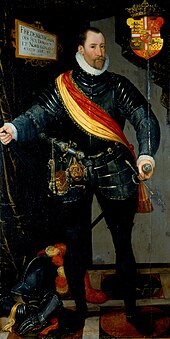
Frederick II was King of Denmark and Norway and Duke of Schleswig from 1559 until his death.

Maribo is a town in Lolland municipality in Region Sjælland on the island of Lolland in south Denmark. To the north of Maribo is Nørresø and to the south is Søndersø. Søndersø is the largest lake on Lolland. There are more islands in Søndersø than in any other lake in Denmark. These include the islands of Fruerø, Hestø, Præstø, Borgø, Lindø, Askø and Worsaaes. This is part of the Maribo Lakes Nature Park, which spans the towns of Maribo, Holeby, Sakskøbing and Nysted.

The Danish resistance movements were an underground insurgency to resist the German occupation of Denmark during World War II. Due to the initially lenient arrangements, in which the Nazi occupation authority allowed the democratic government to stay in power, the resistance movement was slower to develop effective tactics on a wide scale than in some other countries.

Georg Quistgaard was one of 102 members of the Danish resistance to the German occupation of Denmark in World War II who were executed following a court-martial.
Major Flemming Bruun Muus, DSO was a Danish author and resistance fighter during the German occupation of Denmark in the Second World War.
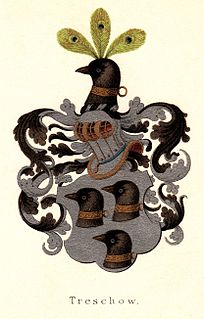
Treschow is a family originating in Denmark and with branches in Norway and Sweden. The family name means "wooden shoe-maker" and the family later counted many merchants in the 17th century and priests in the 18th century. A member of the family, Michael Treschow, bought the status of untitled (lower) nobility in Denmark in 1812, although Norway, where he was resident, abolished the concept of nobility only a few years later. Members of this family have been industrialists and landowners, notably in Vestfold.
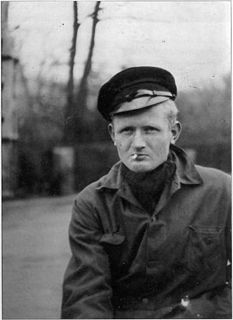
Bent Faurschou Hviid was a member of the Danish resistance group Holger Danske during World War II. He was quickly named "Flammen", for his red hair. In 1951, he and his Resistance partner Jørgen Haagen Schmith, were posthumously awarded the United States Medal of Freedom by President Harry Truman.

Krogerup Højskole is a folk high school located outside Humlebæk in Fredensborg-Humlebæk Municipality north of Copenhagen, Denmark. Founded in 1953, it is based in a former manor house built from 1772 to 1777.

Rosenkrantz is a Danish, Norwegian, and Swedish noble family. The family is known since the 14th century and belongs to the old nobility. It has played a prominent role in Denmark and Norway, its members having been estate owners as well as high officials.
Events from the year 1777 in Denmark.

Kaas is the name of two related Danish noble families from Jutland, which were and are, respectively, two of the preeminent families of the Danish Uradel or ancient high nobility, which were represented in the Council of the Realm. They are known as the elder Kaas family and the younger Kaas family or named for their respective coats of arms. Both families appeared in the middle ages, and they have been noble since time immemorial. Like all old noble families in Scandinavia, the families are untitled, although individual members in the past held the rank of knight, traditionally the highest rank of Scandinavian nobility and reserved for important statesmen, but always of a non-hereditary nature.
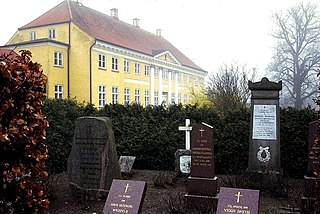
Engestofte is a Neoclassical manor house located 6 km (4 mi) east of Maribo, Lolland Municipality, on the island of Lolland in southeastern Denmark.
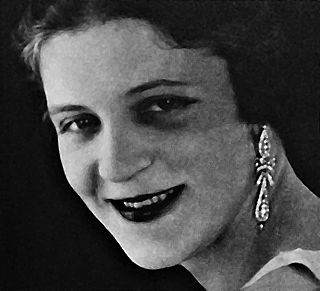
Monica Emily Wichfeld was a leading member of the Danish resistance during the German occupation of Denmark in the Second World War.

Nordfeld is a manor house on the island of Møn in southeastern Denmark. The estate was created in 1774 but the current, Neo-Gothica main building is from 1876.

Jørgen Wichfeld was a Danish landowner, industrialist and deputy district judge from Lolland-Falster who was ennobled by letters patent on 23 July 1888. He owned Engestofte on Lolland, Ukriksdal and from 1774 to 1787 also Nordfeld on Møn.

Maase or von der Maase is a Danish noble family which is descended from the German-Danish theologian and landowner Hector Gottfried Masius whose children were ennobled by letters patent in 1712.
Fuirendal is a manor house and estate located in Næstved Municipality in southeastern Denmark. It has been owned by members of the Holstein family since 1700.

Jørgen Alfred Hviid was a Danish and Latvian multi-sport athlete, and an officer in the Royal Danish Navy. He was primarily an ice hockey player, but also competed in speed skating and sailing.
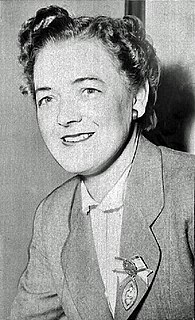
Ellen Marie Christensen (1913–1998) was a Danish nurse who became a resistance fighter during the German occupation of Denmark in World War II. In 1953, she was awarded the Florence Nightingale Medal for her contribution to saving Jews, resistance workers and allied pilots.

Varinka Corinna Wichfeld Muus (1922–2002), whose mother was the Anglo-Irish aristocrat Monica Wichfeld, was a Danish resistance fighter under the German occupation of Denmark in World War II. In 1943, she became the secretary of her husband-to-be Flemming Muus who acted as chief agent in Denmark for the British Special Operations Executive. When Muus was forced to move to Sweden, Wichfeld was charged with telegraphing messages to London as only she knew the secret codes. Together with Muus, she moved to London in 1944 where they remained until the end of the war.

















